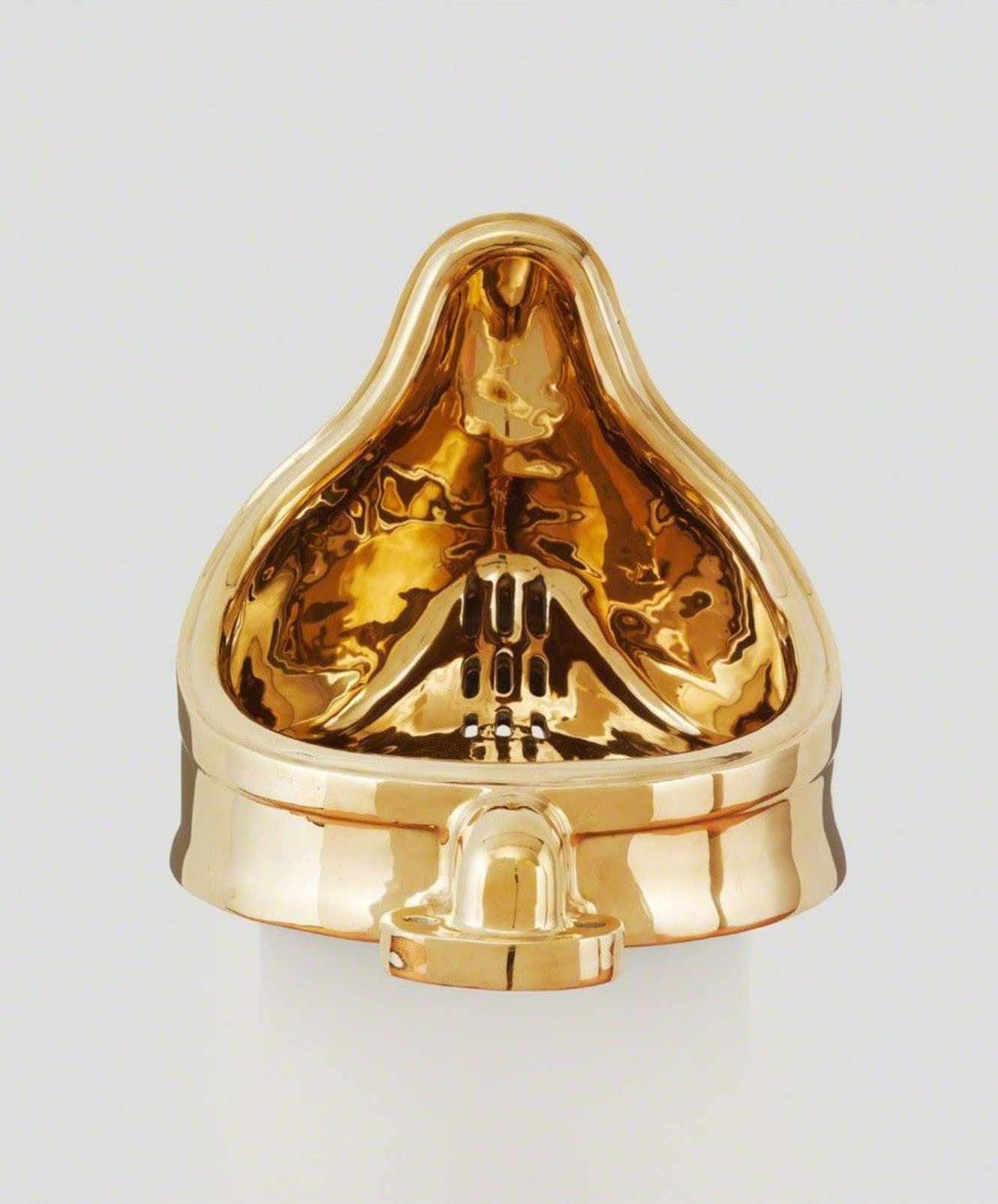If the world were clear, art would not exist.
Albert Camus
If they ever put all the clips they’ve ever gotten of me together they’d see that I’m a moron and finally stop asking me questions.
Andy Warhol
The matrix of contemporary art, its «primitive scene» — Marcel Duchamp’s urinal — was the object of exclusion (from an exhibition) that allows reference to be made to one of the manifestations of stupidity: «stupefaction». The bewilderment many works of art have since been able to arouse in viewers makes the evocation of stupidity pertinent, and even necessary, both in critical reception and in the confrontation of the public with contemporary art.
If the world were clear, art would not exist.
Albert Camus
If they ever put all the clips they’ve ever gotten of me together they’d see that I’m a moron and finally stop asking me questions.
Andy Warhol
Stupefaction as a necessity
Etymologically, the term “stupidity” can be related to “stupor” and its derivative, “stupefaction”.1 Being stupid could be described as being unable to process something new and therefore only being able to react to it with stupefaction. Stupidity is therefore hostile to innovation, because it will accept and acknowledge nothing unless it has already been endorsed by conventional wisdom. Those who are stupid need certainty and are averse to doubt: they are always looking back towards the past, the prism through which they measure and judge the present. If we accept this definition, it becomes reasonable to question the role stupidity played (and still plays) in the world of art, and its interaction with intelligence. I hope readers will forgive me if I cite, as my first example, an extremely well-known work, which is central to any discussion of modern art.
In 1917, Marcel Duchamp asked a friend to submit the work of an artist apparently named Richard Mutt to an exhibition at the Grand Central Palace in New York. It was a urinal, upturned and signed. The Society of Independent Artists, which included Duchamp among its members, turned it down, despite the fact that the rules of the association stated that anyone, in return for a modest payment, could show their work. The exhibition opened on 10 April 1917, with more than two thousand works. Thanks to its exclusion, Fountain, by Richard Mutt, eclipsed them all and became an icon of modern art.2
But what would have happened if the Society of Independent Artists had accepted the work by Mutt-Duchamp? If the panel, which incidentally was created with the aim of rejuvenating the art scene, had possessed enough of a sense of irony to understand the meaning of the readymade object? How would it have turned out if they hadn’t been so stupid? It’s hard to say. Some people would probably have been scandalised, but it is also possible that in all the confusion of such a kaleidoscopic exhibition the object would have been seen as a simple stunt, causing hilarity, or – who knows – even have gone unnoticed. If the gamble had failed, perhaps Duchamp would have returned to his old love, playing chess.3 Anyway, in terms of modern art, who knows what other paths he might have taken. Instead, right from the start, Duchamp’s conceptual process relied on a necessary, even indispensable stupidity, for which we should perhaps be grateful. The panel that rejected Fountain should at least be credited as co-authors of the now mythical conceptual art event.4
But it did not end there. Even today, artists can count on the contribution of those who still find it possible to be stupefied and outraged – not because of anything new in the world of art, but even now, a hundred years later, because of Duchamp’s work, which is cursed and seen as responsible for the destruction of art’s so-called fundamental values:
Countless studies have been dedicated to Duchamp’s urinal. Let us remember here that the porcelain basin, rotated ninety degrees, looks at first sight like a perverse parody of the shell bearing Aphrodite, born from the seafoam and the god’s sperm. Under the jet of urine only the “ruins” of beauty remain. However the substitution of human waste for the divine seed means that procreation no longer has anything to do with Eros, but has returned to a primitive cesspit. The foul jet and foaming of the urine represent an affront to beauty (Clair, 2004, 28; translated from the Italian edition).

Sherrie Levine, Fountain (After Marcel Duchamp), 1947
© Photo: Scala, Florence / The Museum of Modern Art, New York
Criticism of the presumed banality of contemporary art stems from a blatant misunderstanding that identifies it with stupidity, emptiness and the absence of meaning. The banality of Pop art, however, is exactly the opposite: it is an excess of signification, opening up to every possible meaning.
Moralists, traditionalists and the nostalgic in the grip of stupefaction, outraged at the fatal route taken by contemporary art thanks to Duchamp, still regret the disappearance of an essential value inseparably linked to the concept of truth: beauty. For this school of thought, the truth of beauty consists of respect for rules, assuring the work’s morality. As for the beauty of truth, I think that what is at stake here is the complacency of those who observe phenomena around them while lazily and deliberately ignoring their inescapable and bountiful complexity.5 For the stupefied anachronists, art was once an expression of the “divine seed”, capable of producing only beauty (Aphrodite) but now capable of producing only banalities. What these traditionalists don’t understand is that the presumed beauty of a work of art has never had anything to do with its intrinsic qualities, but rather with the way it is observed and judged. I strongly suspect that if Jean Clair had lived at the time of Caravaggio, he would undoubtedly have preferred Annibale Carracci’s painting, and found it scandalous that a horse’s looming backside should feature in the foreground of the Conversion of Saint Paul (1601). Yet I am ready to bet that the traditionalist critic sees Caravaggio as embodying an ideal of perfect beauty, capable of transmitting, through the technical play of light and shade, art’s spiritual dimension.6
As well as Marcel Duchamp, the traditionalists always take a swipe at Andy Warhol:
Modern Art has been a magnificent utopia from Baudelaire to Pound, from Manet to Picasso, but after Warhol it became trivialised, degraded, reduced to a flat repetition of a sort of Duchamp spirit. In so-called contemporary art, provocation comes down to a simple display of extraordinarily banal platitudes.7
Criticism of the presumed banality of contemporary art stems from a blatant misunderstanding that identifies it with stupidity, emptiness and the absence of meaning. The banality of Pop art, however, is exactly the opposite: it is an excess of signification, opening up to every possible meaning. Banality, if anything, is simply the limbic condition of an object before someone discovers its potential. The words of Claes Oldenburg – one of the protagonists of Pop art at its peak – have perhaps not been well understood: “I am for an art that takes its form from the lines of life itself, that twists and extends and accumulates and spits and drips, and is heavy and coarse and blunt and sweet and stupid as life itself.” (Calvesi and Boatto, 2008, 27). For Oldenburg, stupidity (in art or in life) provokes a type of Stendhal syndrome in a contemporary key, an aesthetic thunderbolt, but outside the museum, among garbage, in supermarkets, on the street or in fast food joints. By the very virtue of its banality, his gigantic hamburger (Floor Burger, 1962) leaves itself open to every possible interpretation (like Marcel Duchamp’s The Large Glass). With Pop art there began a period that was summed up by Andy Warhol: “The mystery was gone, but the amazement was just starting” (Warhol, 2007, 51). “The mystery”, understood as the sacred quality of art, as a truth only revealed to a small elite, had vanished and the doors of art were opening wide to banal everyday life in all its contradictory and amazing richness (Restany, 2007). The origin of the adjective “banal” makes Warhol’s statement all the more pertinent. The word comes from the French “banal”, originally meaning “belonging to the ban”, or to a feudal domain. Banal, therefore, suggests something that came to the people from the lord of the manor. According to traditionalist thought, in art the lord of the manor is whoever has the power to determine what art is and what it cannot be. The readymades of Dada and Pop, on the other hand, proclaim that discourse can be generated by the potential inclusion in the world of art of anything, showing how much it is capable of beauty precisely because it is banal. The persistence of the concept of beauty in contemporary art is an objective phenomenon. The battle that has always existed is not between those who defend it and those who wish to destroy it, but between those who seek to define its boundaries and those whose innovation extends its reach into new territories (Danto, 2008). We might say that the great innovators in art, from Caravaggio to Pollock, deliberately wanted to create something ugly, or rather something different from the concept of beauty imposed by previous eras, thus demonstrating that ugliness, when all is said and done, is just the beauty of the future.

© Claes Oldenburg e Coosje van Bruggen
Are artists stupid?
Art exists outside classifications of stupidity and intelligence, involving decidedly more interest in definitions that are more relevant and, above all, more effective in terms of the market. Artists’ actions and statements, beyond the confines of their art, may appear nonsensical and stupid because they can only be understood by means of the system’s internal access codes. The public, when it enters an art gallery or museum, knows that everything contained in those spaces must be art, while everything left outside the doors is not art. Within the frame of art (Goffman, 2013), the rules of conventional wisdom change and consequently the public must engage in different behaviour and apply different judgements from those that they bring to bear in the outside world:
All play presupposes the temporary acceptance, if not of an illusion (indeed this last word means nothing less than beginning a game: in-lusio), then at least of a closed, conventional, and, in certain respects, imaginary universe. Play can consist not only of deploying actions or submitting to one’s fate in an imaginary milieu, but of becoming an illusory character oneself, and of so behaving. […] (The individual) forgets, disguises, or temporarily sheds his personality in order to feign another (Caillois, 2001, p. 19).
An example. Let us imagine meeting, on the street, a blindfolded man dressed in black, standing still in front of a wall. Someone close by is hurling rubber balls at him. The man in black, leaning forward slightly, makes no attempt to avoid them. Around him, a group of people are observing the scene with interest, but no one steps forward to help him. Now let us imagine ourselves in an art gallery, looking at a 1970 film showing the American body artist Vito Acconci’s performance Three Adaptation Studies.
[...]
*Translated by Emma Mandley / KennisTranslations
Share article